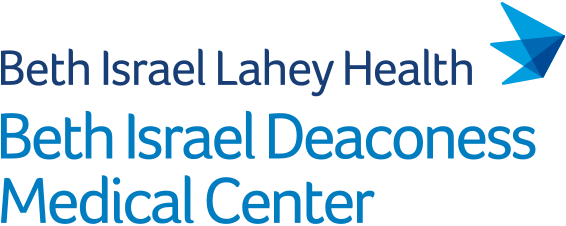Policymakers have intensified calls to expand work requirements in Medicaid across the United States, which could have implications for low-income adults who experience a high burden of cardiometabolic risk factors and disease. In this difference-in-differences analysis, we found that the implementation of Medicaid work requirements was associated with decreased health insurance coverage, no change in employment status, and a trend towards worse access to care. Our findings suggest that the expansion of work requirements could have major implications for the cardiovascular health of working-age adults in the US.
Publications
2025
BACKGROUND: Drug-eluting stents (DESs) with controlled antiproliferative drug release reduce restenosis risk, but durable polymers can delay healing and inhibit reendothelialization. The Firehawk biodegradable polymer sirolimus-eluting stent (BP-SES) has a fully biodegradable sirolimus-containing polymer coating localized to recessed abluminal grooves on the stent surface and delivers roughly one-third the drug dose of other DESs.
OBJECTIVES: We report the primary results of the TARGET-IV NA (Firehawk Rapamycin Target Eluting Coronary Stent North American Trial) randomized controlled trial comparing clinical outcomes with BP-SES vs currently used second-generation DESs.
METHODS: The TARGET-IV NA study was a prospective, multicenter, single-blind, 1:1 randomized noninferiority trial comparing the BP-SES with control in North America and Europe among patients undergoing percutaneous coronary intervention for chronic or acute coronary syndromes. The primary endpoint was target lesion failure (TLF) at 12 months (composite of cardiac death, target vessel-related myocardial infarction, or ischemia-driven target lesion revascularization). The primary analysis (intention-to-treat) tested noninferiority of BP-SES vs control using an absolute margin of 3.85% and 1-sided α of 0.025. Noninferiority-powered secondary endpoints were tested in an optical coherence tomography substudy (endpoint: mean neointimal hyperplasia thickness) and an angiography substudy (endpoint: in-stent late lumen loss).
RESULTS: A total of 1,720 patients (mean age 66 years; 74% male) with 2,159 lesions were randomly allocated to receive either BP-SES (860 patients, 1,057 lesions) or control second-generation DES (860 patients, 1,084 lesions). A total of 61% of patients presented with stable coronary disease, 32% had unstable angina, and 7% had non-ST-segment elevation myocardial infarction (NSTEMI) or recent ST-segment elevation myocardial infarction. The rate of TLF with BP-SES was noninferior to control at 12 months (3.4% vs 3.3%, absolute risk difference 0.13%, upper bound 97.5% CI: 2.03, Pnoninferiority < 0.0001). Cardiac death, myocardial infarction, and stent thrombosis rates were similar between groups. Angiographic follow-up was available in 104 patients (97.2% of those enrolled in the angiographic substudy) and 128 (94.1%) lesions. At 13 months, the powered secondary endpoint of mean in-stent late lumen loss was 0.149 ± 0.263 mm for BP-SES and 0.327 ± 0.463 mm for control (least squares mean difference: -0.178; 90% CI: -0.2943 to -0.0632; Pnoninferiority < 0.0001). The optical coherence tomography substudy included 37 patients (42 lesions) with no difference in mean neointimal hyperplasia thickness between groups at 13 months (Pnoninferiority = 0.01).
CONCLUSIONS: The biodegradable polymer sirolimus-eluting stent was noninferior to currently used second-generation DES with regard to TLF at 1 year. (Firehawk® Rapamycin Target Eluting Coronary Stent North American Trial; NCT04562532).
BACKGROUND: Transcatheter edge-to-edge repair of the mitral valve (mTEER) reduced a hierarchical end point that included death and heart failure hospitalization in COAPT (Cardiovascular Outcomes Assessment of the MitraClip Percutaneous Therapy for Heart Failure Patients With Functional Mitral Regurgitation Trial). However, the magnitude to which mTEER increases the number of days a patient spends at home (DAH) in the first few years after treatment, a patient-centered end point not captured routinely in clinical trials, has not been evaluated. We compared 1- and 2-year DAH among patients with functional mitral regurgitation and heart failure randomized to mTEER plus medical therapy versus medical therapy alone (control) by linking the COAPT trial to comprehensive health care claims data.
METHODS AND RESULTS: We linked data from COAPT trial participants to Medicare fee-for-service claims. DAH was calculated as the number of days alive and spent outside a hospital, skilled nursing facility, inpatient rehabilitation, long-term acute care hospital, emergency department, or observation stay after randomization. Treatment groups were compared using quantile regression to calculate the area under the curve of cumulative distribution functions. We linked 271 patients (mTEER 136/302, control 135/312) for a 2-year follow-up. Mean±SD DAH at 1 year was 312.0±95.6 in mTEER and 298.1±107.5 in controls with similar area under the curve (difference 13.9 days [-10.5 to 38.3], P=0.26). DAH at 2 years was 577.2±235.6 in mTEER and 518.2±253.0 in control with a higher area under the curve in mTEER (difference 59.0 days [0.07 to 117.9], P=0.0497).
CONCLUSIONS: In the COAPT trial linked to Medicare claims, patients randomized to mTEER spent a similar number of DAH at 1 year but more time at home at 2 years compared with medical therapy alone.

